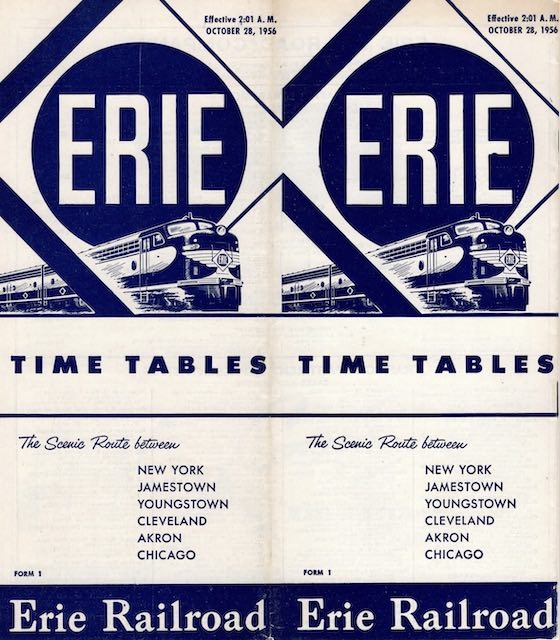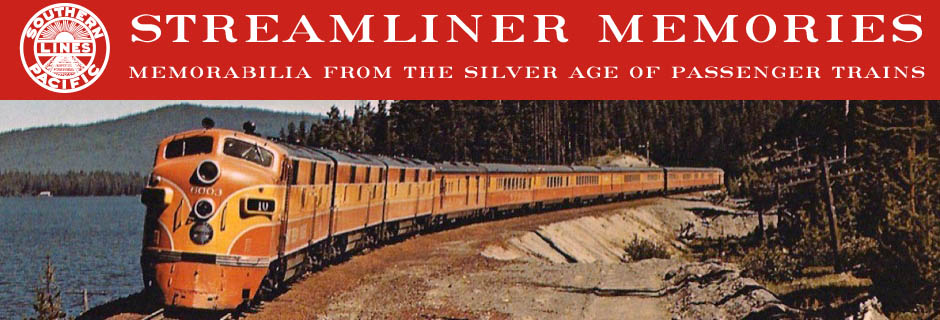As a westerner used to major corridors being historically served by two or, at most, three railroads, I find the New York-Chicago line-up of railroads to be somewhat bewildering. This corridor was dominated, of course, by the New York Central and Pennsylvania, but Baltimore & Ohio was also a contender. Then there was the Erie, which had its own route to Chicago.
 Click image to download a 10.7-MB PDF of this timetable contributed by Ellery Goode.
Click image to download a 10.7-MB PDF of this timetable contributed by Ellery Goode.
On top of that, there were the Lehigh Valley (for which we’ll see a timetable tomorrow) and Delaware, Lackawanna & Western, which both went as far west as Buffalo. From there, Lehigh Valley trains continued to Chicago on the Grand Trunk while Lackawanna trains went on the Nickel Plate (which we’ll see the day after tomorrow). On the periphery were Chesapeake & Ohio and Norfolk Western, whose mid-1950s timetables will also appear here in a few days. Many of these railroads survived the intense competition in the 1950s by hauling coal.
The Erie Railroad was supposed to be a competitor of the New York Central, but by 1950 it had less than 25 percent as many miles of track and its revenues were much less than 25 percent of the Central’s. Despite stiff competition from the Central, whose route was shorter and faster, the Erie managed to field three trains a day between New York and Chicago in 1956.
These were the Erie Limited, the Lake Cities, and the Pacific and Atlantic Expresses. At a time when New York Central and Pennsylvania trains were taking 16 hours to get from New York to Chicago, the Erie Limited required 25-1/4, the Lake Cities 22-1/4, and the expresses 24-5/6 hours.
The main reason the Erie was slower was its mountainous route, but it also didn’t actually go into New York City, so passengers had to take a bus from Rockefeller Center to its terminal in New Jersey. The back cover of this timetable announces that it was changing its New Jersey station from Pavonia Terminal in Jersey City, which it had occupied since 1861, to the Lackawanna’s terminal in Hoboken.
The Erie had a branch to Cleveland, and this timetable shows that it operated two trains a day from Detroit to Philadelphia, with NYC handling Detroit to Cleveland, Erie Cleveland to Youngstown, Lackawanna Youngstown to Pittsburgh, and B&O Pittsburgh to Washington and Philadelphia. These trains were called the Morning and Evening Steel Kings. Although an entire page of this timetable is dedicated to these trains, the Erie operated only 67 miles of the 730-mile route.
